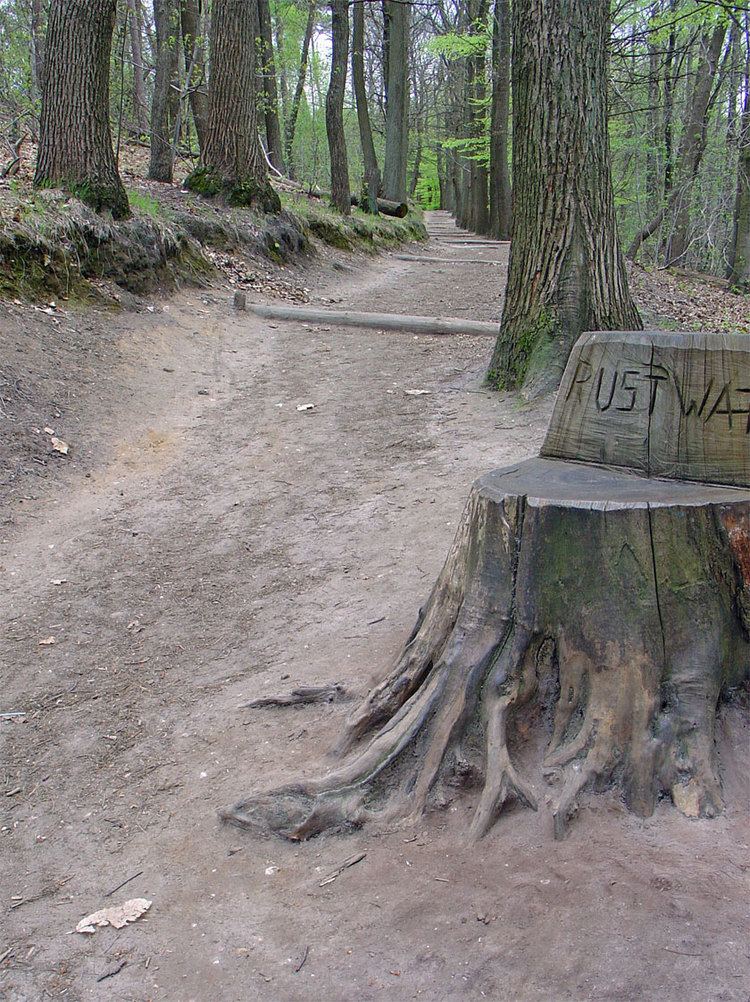Elevation 75.9 metres | Location Gelderland, Nederland | |
 | ||
Similar Veldstudiecentrum Huize Wylerberg, Kerlabo, Nationaal Bevrijdingsmuseum 1944‑1945, Museumpark Orientalis, Park Tivoli | ||
Duivelsberg (German: Wylerberg or Teufelsberg) is a hill and nature reserve in the municipality of Berg en Dal in the Dutch province of Gelderland, near the border with Germany. It is politically significant, however, because Duivelsberg is the only part of the Netherlands that was annexed from Germany and retained after World War II.
Contents
Map of Duivelsberg, Berg en Dal, Netherlands
LocationEdit
The 75.9 m hill is located on a moraine east of Nijmegen, between Berg en Dal, Beek and the Dutch-German border. The nature reserve covers about 125 ha and is predominantly covered with deciduous trees, especially chestnut. It is managed by the Staatsbosbeheer, the Dutch Forestry Commission.
HistoryEdit
In the Middle Ages Mergelp castle stood on the hill. In September 1944 airborne troops of the U.S. 508th Parachute Infantry Regiment fought to capture the Duivelsberg, "Hill 75.9", during Operation Market Garden.
Until 1949 the hill was part of the nearby German village of Wyler in the municipality of Kranenburg. Duivelsberg's German name, Wylerberg, is derived from the name of this village. Duivelsberg was one of the many small areas the Netherlands annexed from Germany on April 23, 1949. Unlike the other areas, Duivelsberg was not returned to the German authorities on August 1, 1963 and remained Dutch territory. The politician Marinus van der Goes van Naters, who lived in nearby Nijmegen during the negotiations with Germany successfully urged that the nature reserve be kept Dutch.
The Duivelsberg was inherited in 1906 by Marie Schuster-Hiby who, between 1921 and 1924, built an expressionist villa designed by the German architect Otto Bartning. In 1965 the Schuster-Hiby family sold the villa to the Dutch State. Since 1985 the Huis Wylerberg has been a nationally protected building in which conservation organizations are located.
